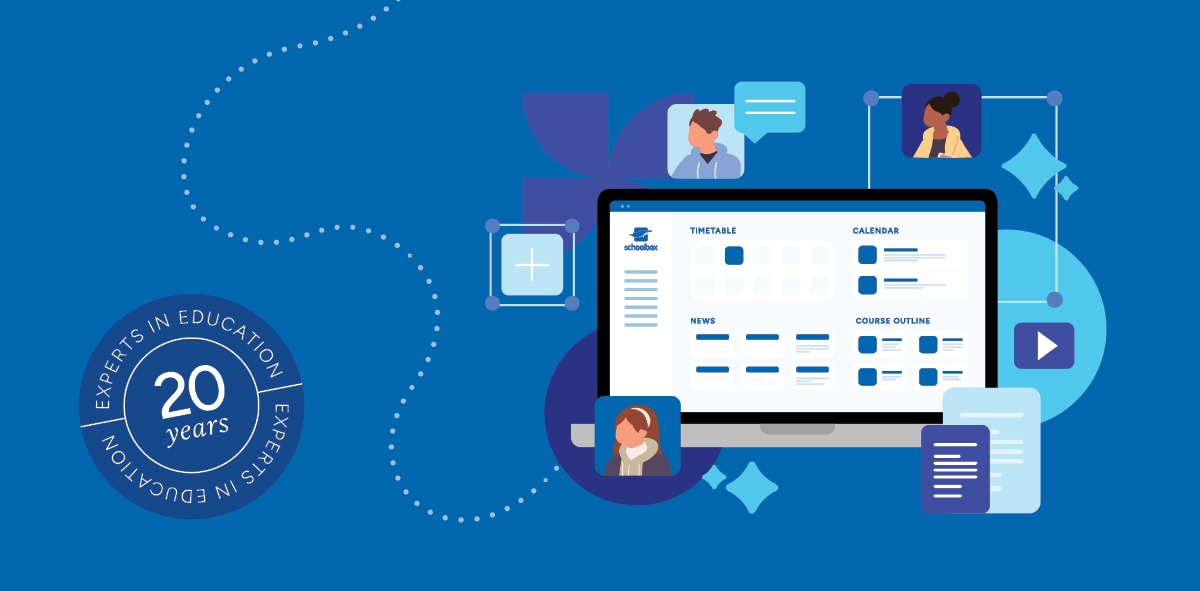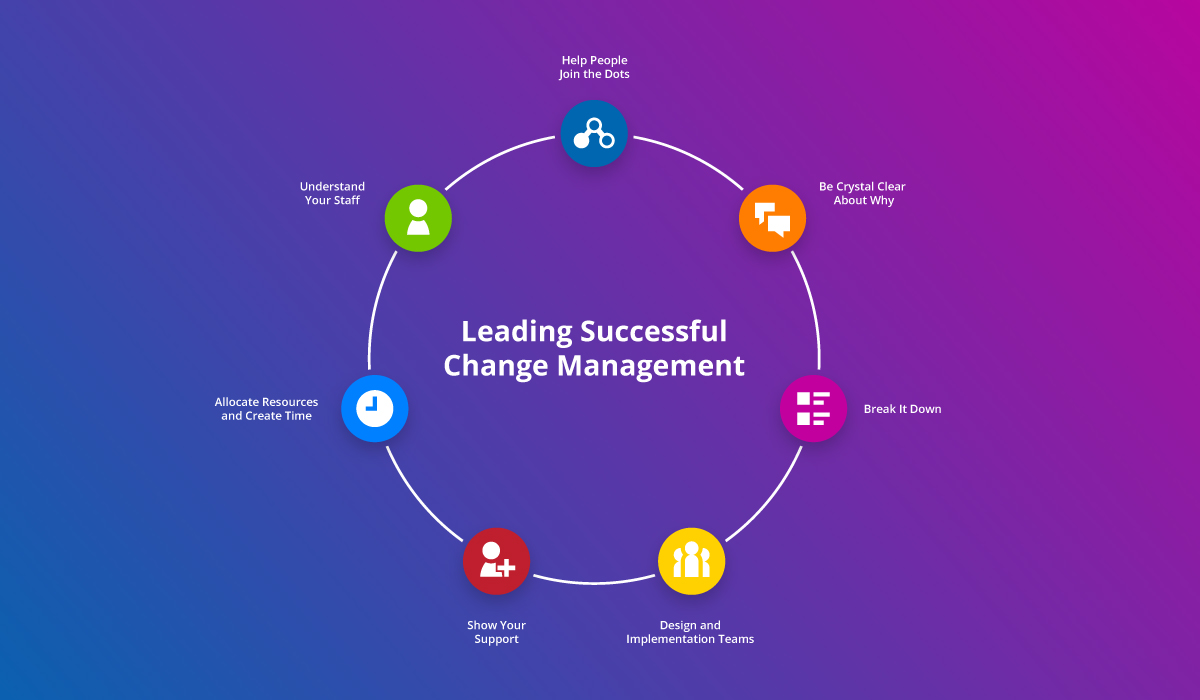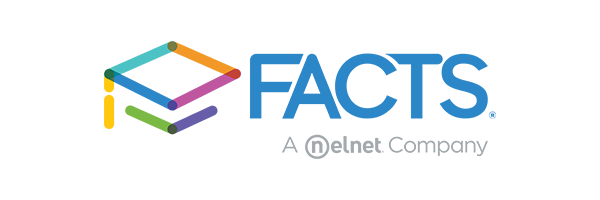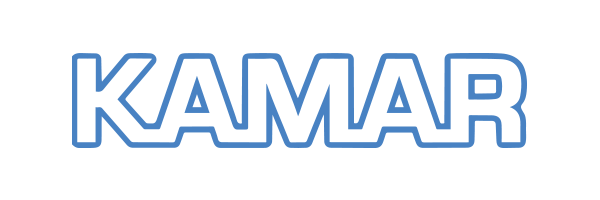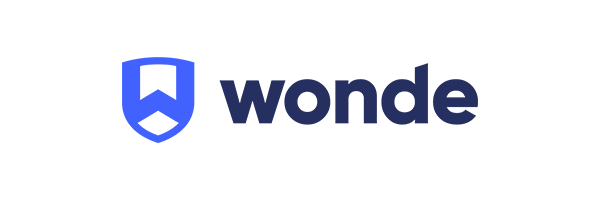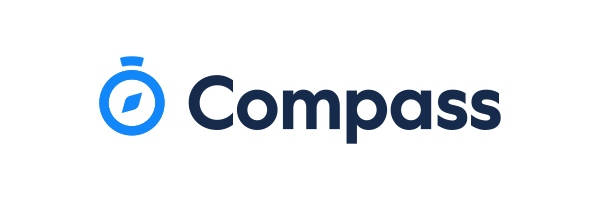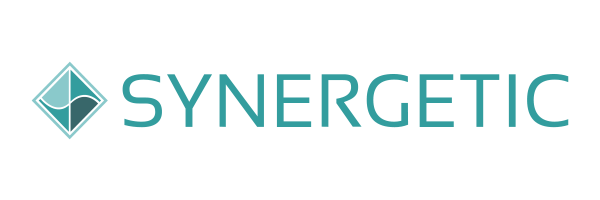The year of 2020 has seen the education sector presented with unprecedented challenges, but also new opportunities. Opportunities for innovation, creativity, and digital transformation. Teachers are now choosing to blend synchronous and asynchronous learning models, to provide students with new prospects, drawn from traditional and remote teaching and learning methodologies.
What is synchronous and asynchronous learning?
Synchronous learning involves teachers and students connected in ‘real-time’, whether it be face to face in the classroom, or virtually via a video conferencing platform. In contrast, asynchronous learning occurs without direct connection between teacher and students, and often in different locations or mediums. Bringing these two methods of learning together can offer added value above and beyond utilising a single approach. This blog provides insight into five benefits of blending synchronous and asynchronous approaches to learning, and how Schoolbox, an online learning platform for K–12 schools, can support the experience.
1. Preparation for Learning
By blending synchronous and asynchronous, you can ensure students are prepared for lessons ahead of time, so that time spent with the teacher can be more focused and provide deeper engagement and discussion.
Assigning activities for students to undertake prior to a lesson enables synchronous learning time to focus on higher level thinking skills, and exploration of new and important concepts.
Content, resources, links and accompanying activities, can help form foundational knowledge and skill for students of all ages. With the aid of a learning management system (LMS), these resources can be provided for students to access prior to class in an asynchronous way.
The Schoolbox LMS provides numerous ways to ‘front load’ students with knowledge and ideas for their learning. Here are some common components that can be added prior to class:
- Videos
- Polls
- Surveys and Forms
- Quizzes
- Tasks
- News

2. Collaborative Opportunities
Teachers know that students who are self motivated and work well collaboratively with their peers, enable themselves to achieve their very best.
Opportunities for collaboration can occur in a variety of ways. Synchronous collaboration allows students and teachers to combine their intellectual effort at the same time, often in the classroom, but also via video conferencing platforms.
The benefit of utilising a blended model for the purposes of student collaboration, is that some students will cherish the togetherness; thinking on the spot, and contributing during that moment in time. Conversely, some students may benefit from the ‘anonymity’ of their collaborative contributions through forum posts, blogs, surveys and polls or other asynchronous methods, allowing them time to provide a considered response.
Schoolbox supports collaborative opportunities synchronously and asynchronously with the best place for curriculum related collaboration on class pages and group pages for extra-curricular and specialist group or project-based scenarios.
Schoolbox also incorporates a number of video conferencing integrations to enable synchronous learning in situations where physical classrooms are not available.
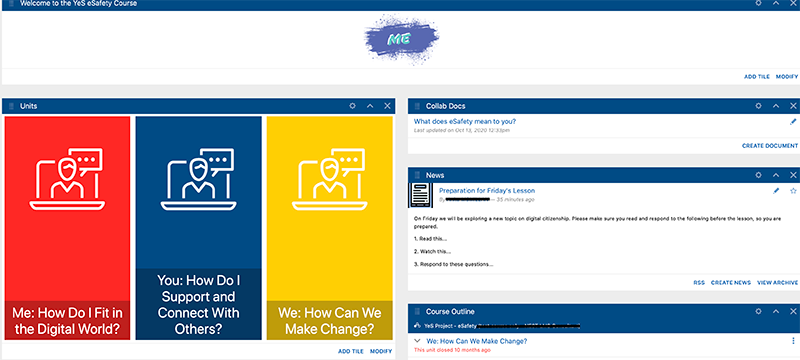

3. Differentiation
Another benefit of blending synchronous and asynchronous learning is that it helps to ensure successful deployment of differentiation strategies.
Differentiation refers to the practice of tailoring learning to the individual needs of a student, or group of students. Blending asynchronous and synchronous learning makes it possible to offer students multiple means of representation, action and expression and engagement, the guiding principles of Universal Design for Learning. Schoolbox enables content design to be tailored to suit all learners with a combination of text, images, video, links and embedded 3rd party learning platforms for interactive elements. Students can also contribute to their own learning through collaboration with teachers and each other via forums and blog components.
4. Equitable Participation
Of the great challenges for teachers is to provide equitable opportunity for student contribution to ideation, class discussion and problem solving. Synchronous learning opportunities are often dictated by school timetable structures with students often ‘competing’ during the limited time in the classroom. For students who have a specific learning need, synchronous learning may not provide them with the time and ‘space’ necessary to contribute and therefore demonstrate what they know and can do. Asynchronous opportunities provide the chance to ‘democratise’ the learning as students are able to participate outside the classroom, free from the shackles of structured learning time.
Activities can be deployed via the course builder and course outline components in Schoolbox to both enhance learning, but importantly, equitable access to resources and participation opportunities. Students can access and respond to tasks set by teachers in their own time, including the opportunity to self-reflect and self-assess.

5. Flexibility
Having a learning management system pre-populated with content, learning activities, and assessments as part of the school Teaching and Learning program, ensures learning continuity and flexibility for all and, at all times.
Combining synchronous and asynchronous learning benefits this flexible approach by allowing teachers and students to engage with each other, and with content and activities, at any time and from anywhere.
When Schoolbox is fully deployed in a school, teaching and learning, staff information, and communication may continue amongst staff, students and the broader school community regardless of external factors. In particular, Schoolbox offers:
- Learning management system with course, unit and class pages for each subject, with the addition of assessment activities.
- Markbooks to capture results and feedback and share with students and parents.
- 3rd party integration tools such as Zoom, for video conferencing or meetings.
- Communications, particularly news and notifications to reach the school community anytime, anywhere.
Blending Synchronous and Asynchronous Learning
Face to face classroom teaching and interactions remain essential to the development of a child’s learning, however during times of great disruption and upheaval, teachers are required to find alternative approaches. Remote learning during the pandemic has highlighted once again the need for a re-think when it comes to education. A hybrid model combining the best of traditional synchronous and modern asynchronous strategies has provided new opportunities and interesting ways in which we teach and engage with our students, providing the best of both worlds.
Peter Cottle is an educator and e-learning specialist with over 13 years experience in K–12 schools. A passionate advocate of learning design underpinned by Universal Design for Learning approaches, Peter is a Territory Manager at Schoolbox and is continuously looking for ways to enhance the learning experience of all learners.
Would you like to continue the narrative with blending synchronous and asynchronous learning? Contact a Schoolbox expert today.

